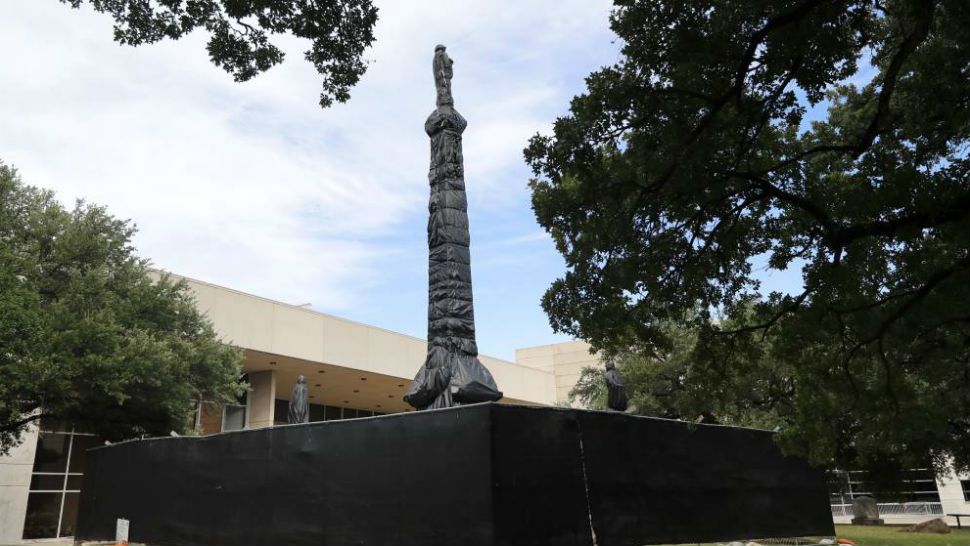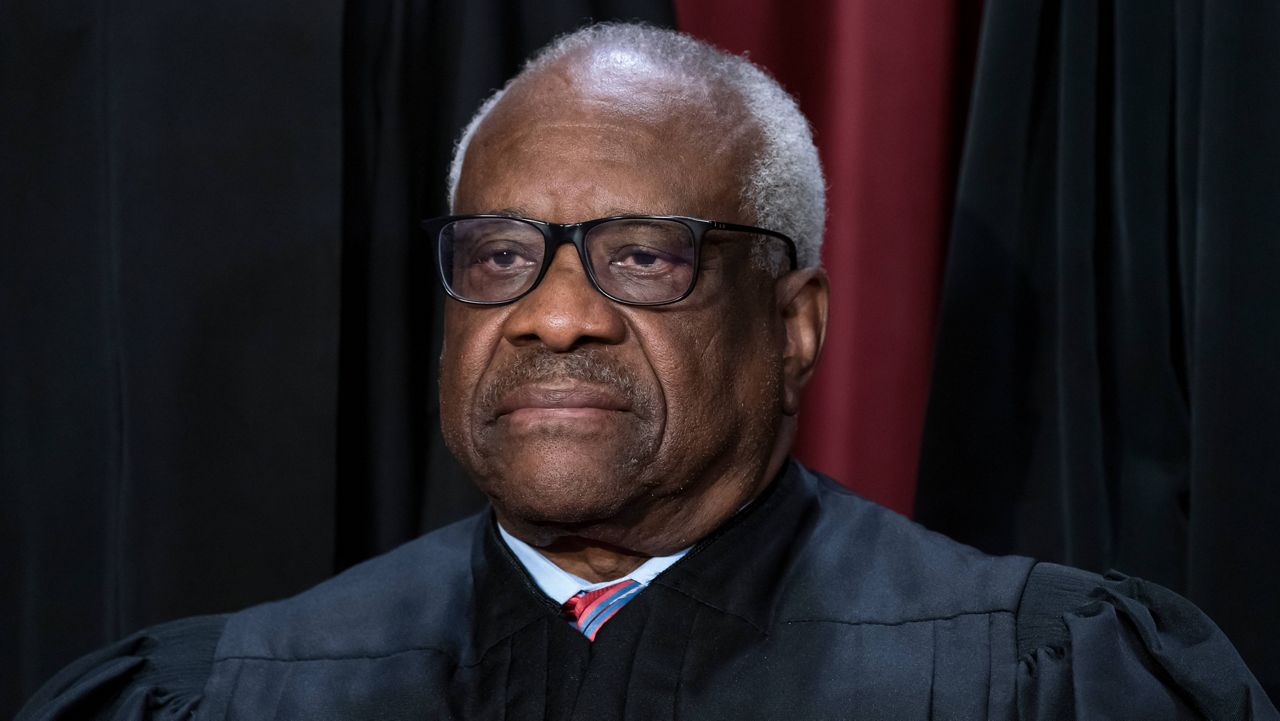DALLAS — The city’s most prominent Confederate monument came down this week after winning a battle in the courts to remove it as part of a growing, nationwide movement to dismantle – or in some cases, tear down – symbols memorializing Confederate soldiers and generals.
City workers on Monday began to remove the Confederate War Memorial’s 65-foot obelisk and the soldier statue mounted on its top that has stood in downtown’s Pioneer Park since 1961, just steps away from Dallas City Hall and the Kay Bailey Hutchison Convention Center.
The obelisk was the last piece to be dismantled. Workers had begun removing the four surrounding statues of Confederate President Jefferson Davis and Gens. Robert E. Lee, Stonewall Jackson, and Albert Sidney Johnston the previous week.
The marble statues and the obelisk are now being stored in a warehouse at Hensley Field, a former U.S. Naval Air Base in Grand Prairie, according to Catherine Cuellar, a spokeswoman for the City of Dallas. The city last year categorized the 738-acre airfield as an “opportunity zone” for potential development. Discussions on how and whether to develop Hensely Field have been postponed because of the coronavirus pandemic, Cuellar said.
The former airfield has become a catchall storage space for other city equipment, including retired police cars and other city equipment. At one time, it became a temporary home for Bentley, a Cavalier King Charles Spaniel who was quarantined there under the care of Dallas Animal Services in 2014 while his owner, a nurse, recovered after being exposed to Ebola patients.
It’s not the first time Hensley Field has housed retired Confederate monuments. A 1936 bronze statue of Lee sat in a storage crate at the former airfield for two years after being removed from its mantle in Lee Park, now Turtle Creek Park, in Uptown in 2017. That 16,500-pound statue was auctioned off by the city for $1.4 million in June of last year with the caveat that it could not be displayed in public in the Dallas-Fort Worth areas.
“Yes, this is an important moment. But removing all these statues doesn’t end racism,” said Karen Cox, professor of history at the University of North Carolina, Charlotte.“Yes, this is an important moment. But removing all these statues doesn’t end racism,” said Karen Cox, professor of history at the University of North Carolina, Charlotte.
Removing the Confederate War Memorial from Pioneer Park came after a contested fight in the courts and in public opinion. Former Mayor Michael Rawlings appointed a task force in 2017 to give recommendations to the Dallas City Council on the future of Confederate statues, memorials, street, and park names. The creation of the task force came a month after nationwide protests calling for the removal of the statues erupted after a violent white nationalists rally in Charlottesville, Va., left one protestor dead and dozens injured.
Last year, the Dallas City Council and the Landmark Commission voted to remove the Confederate War Memorial in Pioneer Park. A subsequent lawsuit challenged that decision, but an appeals court on June 13 ruled the city could go ahead with the removal.
The $1.4 million sale of the Lee statue of Turtle Creek in 2019 funded the removal and storage of that statue and the Pioneer Park monument, city spokesman Cuellar said. The city spent about $396,000 to remove the Confederate War Memorial and $480,000 to remove the Lee Statue, she said.
The city’s Arts and Culture Advisory Commission will consider what to do with the statues in August, she said.
Across the country, protesters have demanded the removal of Confederate symbols and statues as part of demonstrations against police brutality following the murder of George Floyd in Minneapolis in May.
A 2016 report on nationwide public symbols of the Confederacy from the Southern Poverty Law Center found that there were more than 1,800 monuments, street names, parks, and other symbols of the Confederacy in the U.S. Texas had 68 monuments at the time of the report, the fourth highest of all the former Confederate States. The state has since removed several prominent symbols, including monuments in Houston, Austin, and other cities.
An estimated 776 Confederate monuments still stand in America, according to Lecia Brooks of the Southern Poverty Law Center.
“There’s still a lot of work to do to remove these symbols of hate,” Brooks said. The U.S. saw two recent major calls for removing Confederate monuments. The first came after the murder of 9 parishioners in Charleston, N.C., in 2015 and then again in 2017 after the Charlottesville rally.
This time, “we are seeing a lot of multigenerational, multiracial grassroots movements working for that change, which is encouraging,” Brooks said.
Laws protecting Confederate statues and symbols remain across the South, however, creating legal challenges to the widening demands for the statues to be removed. Six former Confederate states – North Carolina, South Carolina, Tennessee, Alabama, Mississippi, and Georgia, have preservation laws that put the decision to remove monuments firmly in the hands of the state, not local governments.
A proposed monument preservation law failed to pass in Texas last year, but that has not stopped groups from challenging the removal of statues in the state, such as they did in Dallas this year.
When communities have challenged state laws to allow them to decide to remove the symbols themselves, they have been blocked, said Karen Cox, a history professor at the University of North Carolina in Charlotte.
“So when people ask why the protesters don’t go through the proper channels to have the statues removed, the answer is because these states have removed all possibility of a democratic process and redress,” said Cox, who has written extensively about race issues in Southern history and culture. Her book, Dixie’s Daughters: The United Daughters of the Confederacy and the Preservation of Confederate Culture, details the leading role the United Daughters of the Confederacy played in erecting Confederate monuments throughout the South.
“I’m cautious about this moment, I’m not even going to say I’m cautiously optimistic,” she said about the current civil rights demonstrations and protests against Confederate monuments erupting across the country. “Yes, this is an important moment. But removing all these statues doesn’t end racism.”








